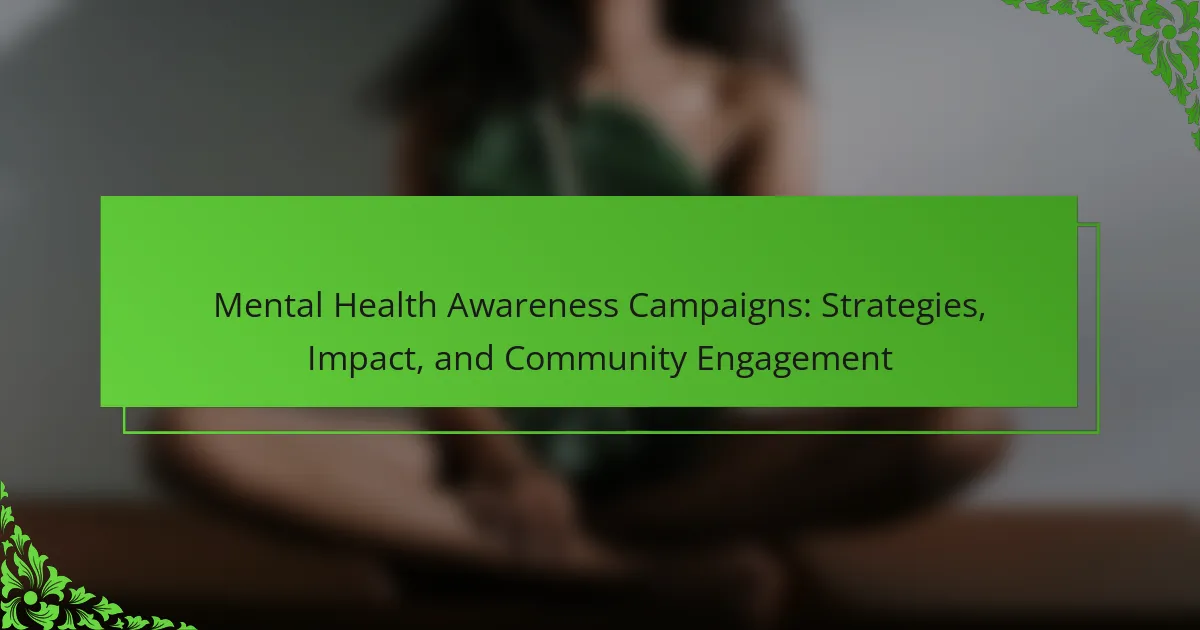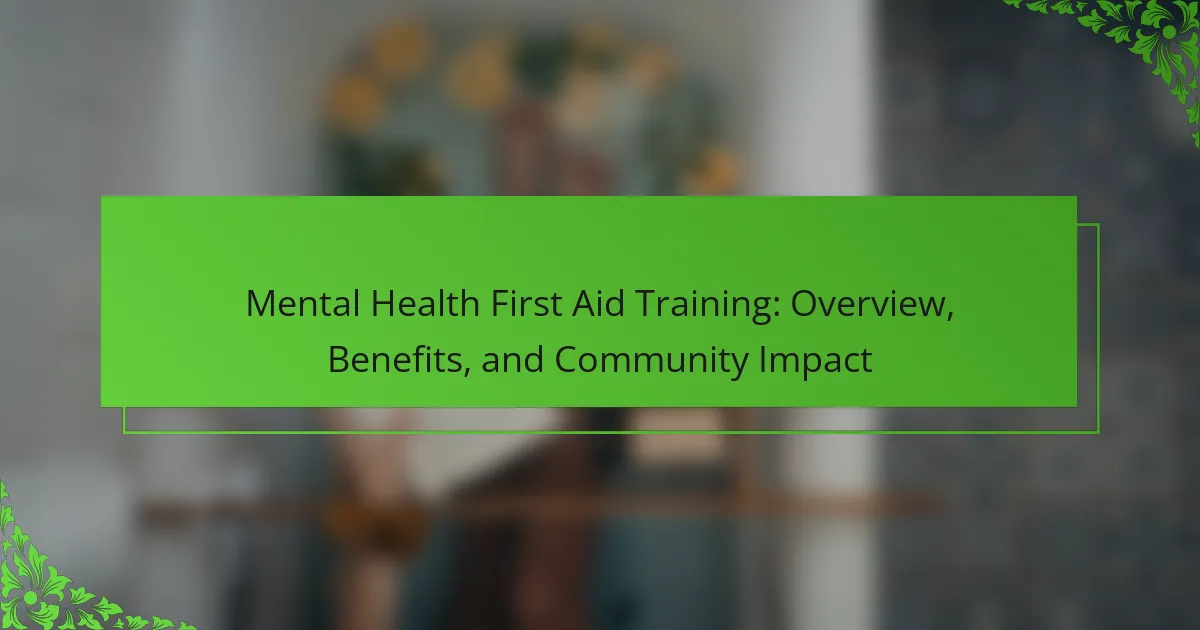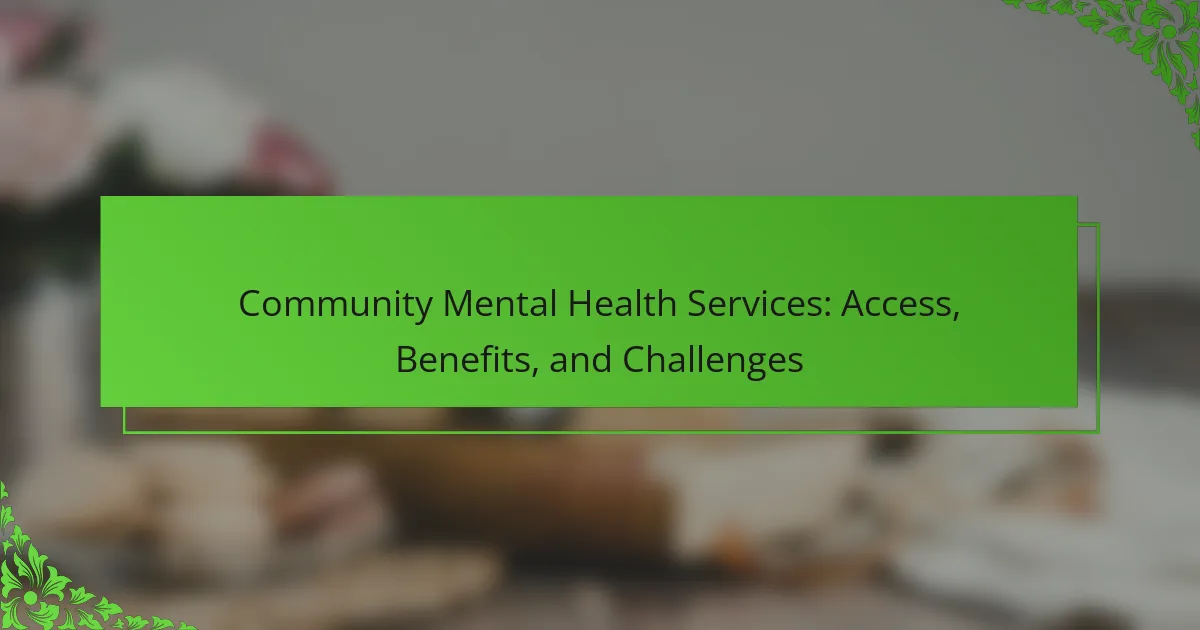Mental health awareness campaigns play a crucial role in reducing stigma and promoting understanding within communities. Key strategies include community engagement, educational programs, and social media outreach. These initiatives significantly impact public perception and encourage open discussions about mental health. Targeted efforts focus on demographics facing higher rates of mental health issues, fostering empathy and support.
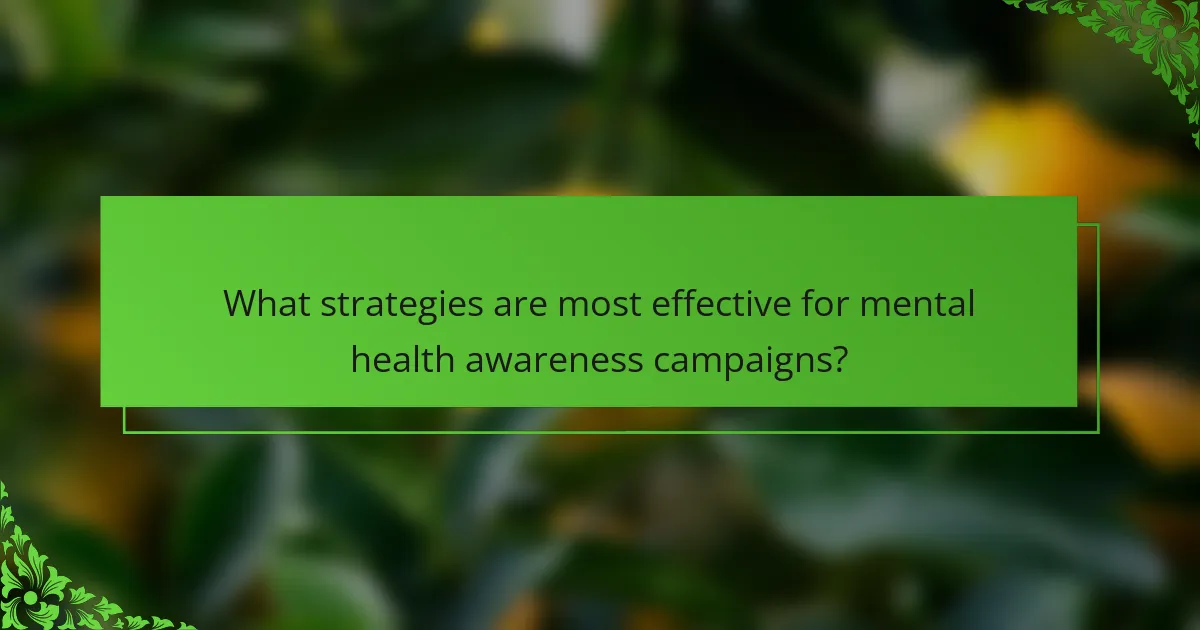
What strategies are most effective for mental health awareness campaigns?
Effective strategies for mental health awareness campaigns include community engagement, education, and social media outreach. Community involvement fosters trust and relatability. Educational programs raise awareness and reduce stigma. Social media platforms amplify messages and reach diverse audiences rapidly. Combining these strategies enhances overall impact and encourages open conversations about mental health.
How do digital platforms enhance campaign reach and engagement?
Digital platforms significantly enhance the reach and engagement of mental health awareness campaigns by leveraging social media, targeted advertising, and interactive content. These platforms allow campaigns to connect with diverse audiences, fostering community involvement and support.
For instance, social media enables real-time interactions, increasing visibility and participation. Campaigns can utilize analytics to tailor messages, ensuring they resonate with specific demographics. Interactive content, such as quizzes and live discussions, encourages user engagement, leading to higher retention and sharing rates.
Moreover, digital platforms facilitate the dissemination of educational resources, promoting mental health literacy. Campaigns can share personal stories, expert advice, and crisis resources, creating a supportive online community. This multifaceted approach not only raises awareness but also drives meaningful conversations around mental health issues.
Which traditional methods still hold value in community outreach?
Traditional methods such as community workshops, peer support groups, and outreach events still hold significant value in mental health awareness campaigns. These approaches foster direct engagement and build trust within communities.
Workshops provide educational resources and facilitate discussions on mental health topics. Peer support groups create safe spaces for individuals to share experiences, reducing stigma. Outreach events, like health fairs, offer accessible information and services, enhancing community involvement.
Collectively, these methods leverage personal connections and local knowledge, making mental health resources more relatable and effective.
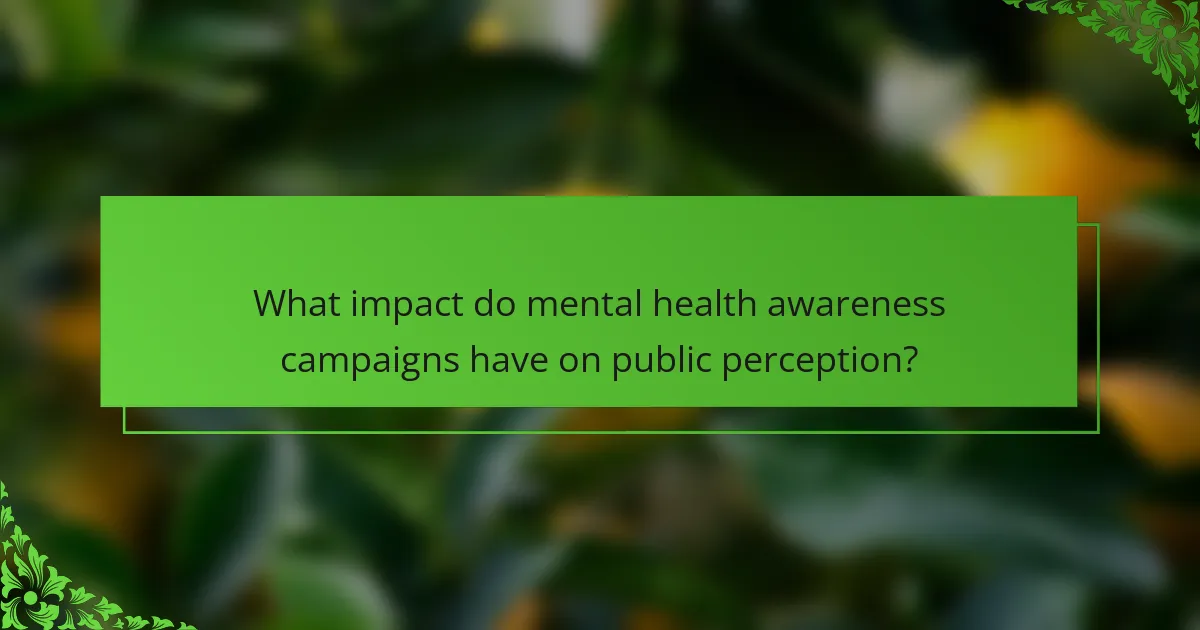
What impact do mental health awareness campaigns have on public perception?
Mental health awareness campaigns significantly improve public perception by reducing stigma and promoting understanding. These initiatives educate communities about mental health, encouraging open discussions. Studies indicate that areas with active campaigns report higher empathy and support for mental health issues. As a result, individuals are more likely to seek help and support others facing mental health challenges.
How do campaigns influence stigma reduction in different communities?
Mental health awareness campaigns significantly reduce stigma in various communities. These campaigns utilize education, personal stories, and community engagement to challenge misconceptions.
For instance, campaigns like “Time to Change” in the UK have shown a 20% reduction in stigma-related attitudes over five years. Engaging local leaders and influencers fosters trust and encourages participation.
Moreover, culturally tailored messaging resonates more deeply, enhancing impact. Campaigns addressing specific community concerns, such as racial or socioeconomic factors, yield better engagement and outcomes.
By promoting open discussions and providing resources, these campaigns create supportive environments, leading to improved mental health perceptions and reduced stigma.
What measurable outcomes can be attributed to these campaigns?
Mental health awareness campaigns yield measurable outcomes such as increased public understanding, reduced stigma, and improved access to resources. These campaigns often lead to higher engagement in mental health services and community support initiatives. For example, studies show that communities with active campaigns experience a 20% increase in help-seeking behavior. Additionally, surveys indicate that 75% of participants report feeling more informed about mental health issues post-campaign.
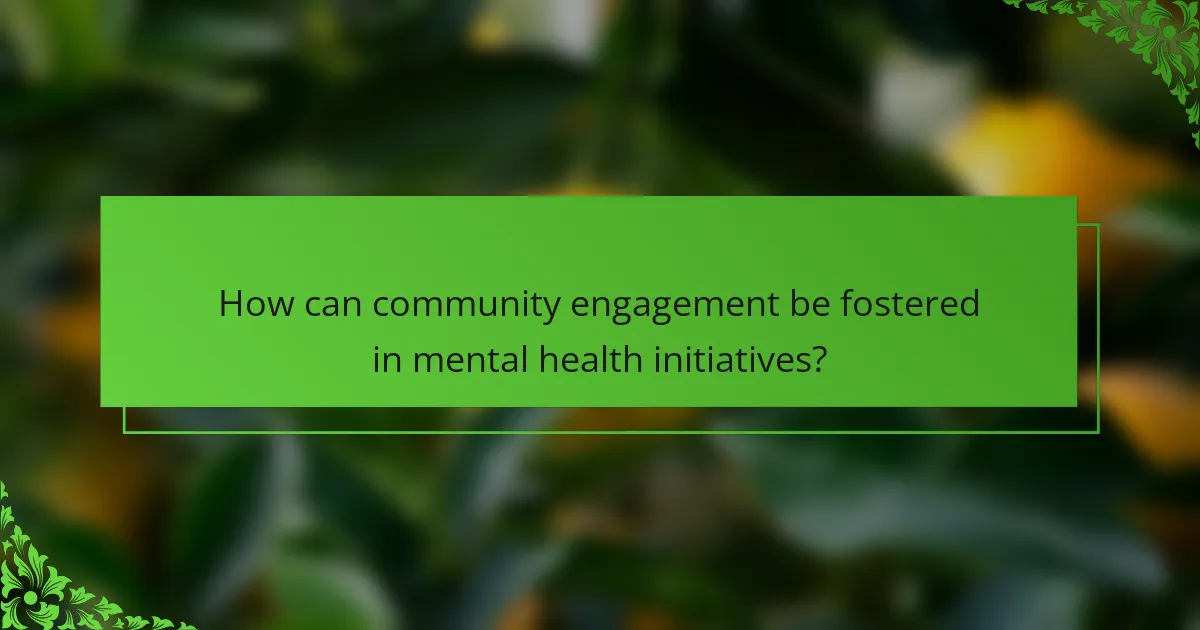
How can community engagement be fostered in mental health initiatives?
Community engagement in mental health initiatives can be fostered through collaborative strategies and active participation. Building partnerships with local organizations enhances outreach and resource sharing. Hosting workshops and events encourages community involvement and reduces stigma. Utilizing social media platforms allows for broader awareness and engagement. Feedback mechanisms ensure that community voices are heard, tailoring initiatives to specific needs.
What role do local organizations play in campaign success?
Local organizations are crucial for the success of mental health awareness campaigns. They provide resources, foster community engagement, and enhance outreach efforts. By collaborating with local entities, campaigns gain credibility and access to targeted audiences. Local organizations often understand community needs better, allowing for tailored strategies that resonate with residents. Their involvement can increase participation and support, ultimately leading to a more significant impact on mental health awareness.
How can grassroots movements enhance awareness and support?
Grassroots movements can significantly enhance awareness and support for mental health by fostering community engagement and advocating for change. They create platforms for sharing personal stories, which destigmatizes mental health issues. These movements often mobilize local resources, providing education and support services tailored to community needs. As a result, they build stronger networks of support that empower individuals and promote mental well-being.

Which demographics are most affected by mental health awareness campaigns?
Mental health awareness campaigns primarily affect young adults, minorities, and low-income individuals. These demographics often experience higher rates of mental health issues and face barriers to accessing resources. Campaigns targeting these groups aim to improve understanding and reduce stigma, fostering community engagement and support. Research indicates that tailored messaging significantly increases awareness and participation among these populations, enhancing overall mental health outcomes.
How do cultural differences shape the reception of these campaigns?
Cultural differences significantly influence how mental health awareness campaigns are received. Campaigns tailored to cultural values and beliefs resonate more deeply with target audiences. For example, collectivist cultures may respond better to community-focused messaging, while individualistic cultures might prefer personal empowerment narratives. Additionally, language and communication styles impact engagement. Campaigns that incorporate local dialects or culturally relevant symbols enhance relatability and effectiveness. Understanding these dynamics leads to more impactful outreach and fosters community engagement.
What unique challenges do young adults face in mental health awareness?
Young adults face unique challenges in mental health awareness, including stigma, accessibility, and lack of tailored resources. Stigma often prevents open discussions about mental health, leading to isolation. Accessibility issues arise from limited services and financial constraints. Additionally, many campaigns do not specifically address the needs of young adults, making it difficult for them to engage. As a result, mental health awareness campaigns must adapt to effectively reach and support this demographic.
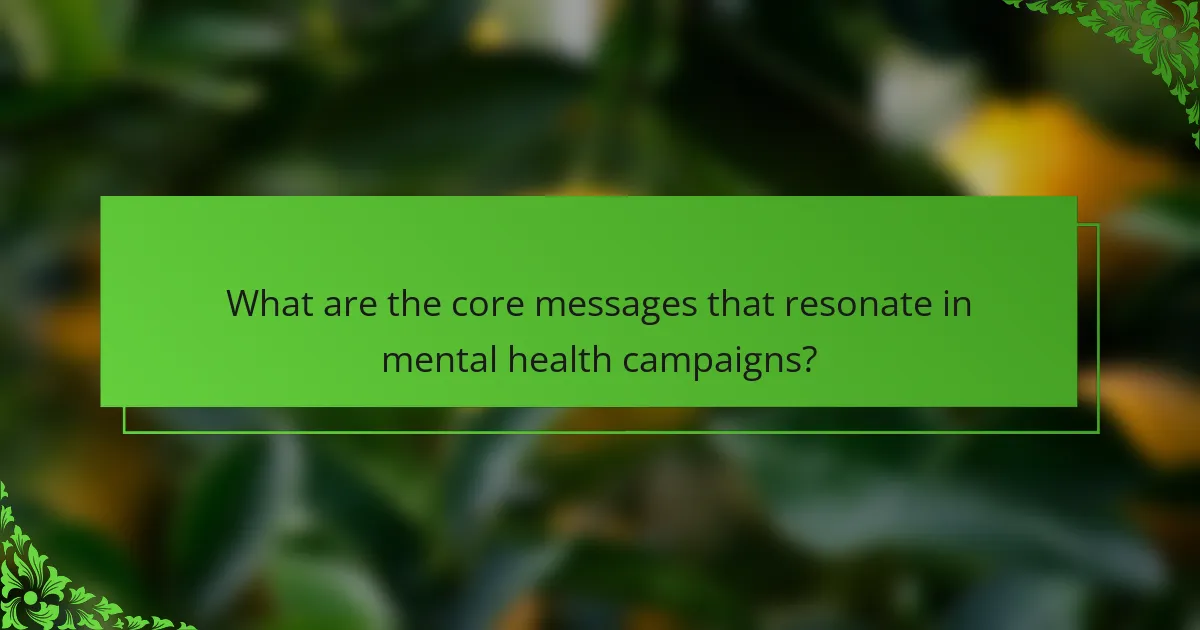
What are the core messages that resonate in mental health campaigns?
Mental health campaigns focus on reducing stigma, promoting awareness, and encouraging help-seeking behavior. Key messages often emphasize the importance of community support, the normalization of mental health discussions, and the availability of resources. Campaigns frequently utilize personal stories to foster connection and empathy. Statistics show that effective campaigns can lead to increased awareness and improved mental health outcomes.
How can messaging be tailored to different audiences for greater impact?
Tailoring messaging for different audiences enhances the effectiveness of mental health awareness campaigns. Understanding audience demographics, cultural backgrounds, and specific needs allows for more relatable and impactful communication.
1. Identify target demographics: Segment audiences by age, gender, socioeconomic status, and cultural background.
2. Customize content: Use language and visuals that resonate with each group, ensuring relevance and relatability.
3. Utilize platforms strategically: Choose communication channels preferred by the audience, such as social media, community events, or traditional media.
4. Engage community leaders: Collaborate with trusted figures to amplify the message and foster credibility.
5. Measure impact: Collect feedback and adjust messaging strategies based on audience responses and engagement levels.
What common misconceptions should campaigns aim to address?
Mental health awareness campaigns should address misconceptions such as the belief that mental illness is a sign of weakness, that therapy is only for severe cases, and that recovery is not possible. These misunderstandings hinder individuals from seeking help and perpetuate stigma. Campaigns should emphasize the importance of mental health, promote understanding of various conditions, and highlight the effectiveness of treatment options. For instance, studies show that early intervention can significantly improve outcomes, countering the myth that only severe cases require attention.
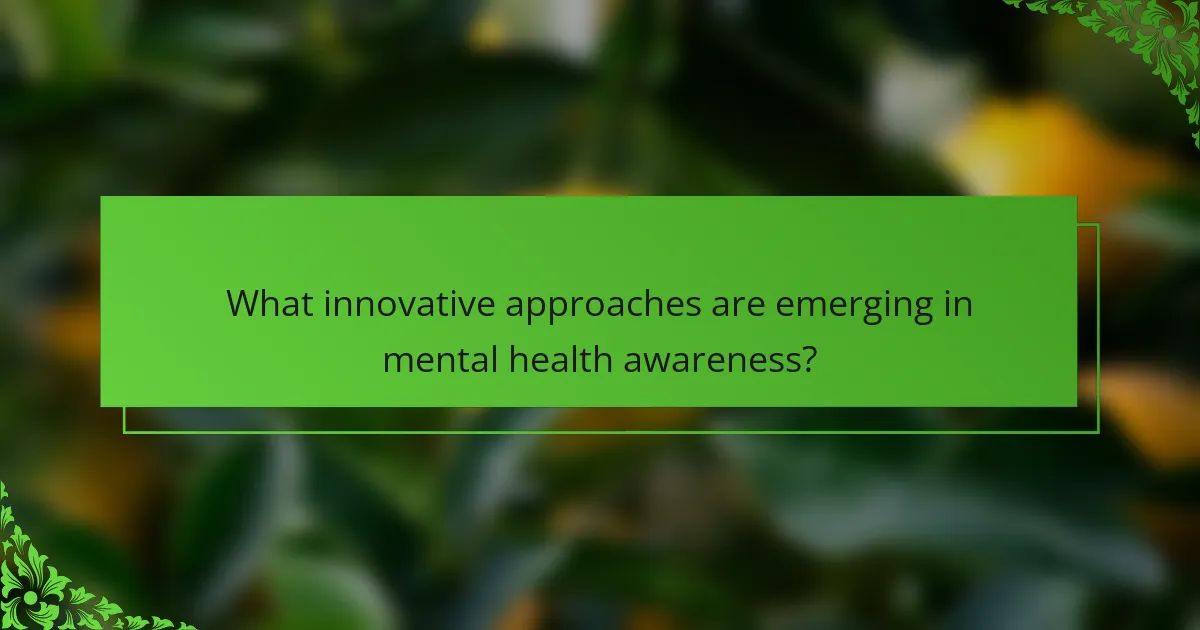
What innovative approaches are emerging in mental health awareness?
Innovative approaches in mental health awareness focus on technology, community involvement, and personalized strategies. Digital platforms enhance outreach through social media campaigns, virtual support groups, and mental health apps. Community engagement fosters local initiatives that prioritize mental health education and stigma reduction. Additionally, tailored programs address unique needs, promoting inclusivity and accessibility. These strategies significantly impact public perception and encourage proactive mental health management.
How are technology and social media changing the landscape of awareness campaigns?
Technology and social media are revolutionizing mental health awareness campaigns by enhancing reach and engagement. Digital platforms allow campaigns to connect with diverse audiences, fostering community involvement. Social media enables real-time interaction, facilitating discussions that reduce stigma. Additionally, data analytics help tailor messages to specific demographics, increasing campaign effectiveness. As a result, these tools are crucial in shaping perceptions and promoting mental health resources.
What unique attributes set apart successful campaigns from less effective ones?
Successful mental health awareness campaigns distinguish themselves through clear messaging, community involvement, and measurable impact. Unique attributes include targeted audience engagement and collaboration with mental health professionals. Campaigns that utilize data-driven strategies tend to achieve greater reach and effectiveness. Additionally, fostering partnerships with local organizations enhances credibility and resource access.
What rare strategies have yielded significant results in specific communities?
Innovative approaches in mental health awareness campaigns have produced significant results in various communities. One effective strategy involves utilizing local influencers to disseminate mental health information, fostering trust and relatability. Another rare strategy includes integrating mental health education into community events, enhancing visibility and engagement. Additionally, employing art and storytelling as tools for expression has created impactful narratives that resonate with diverse audiences. These methods have led to increased awareness, reduced stigma, and improved community support for mental health initiatives.
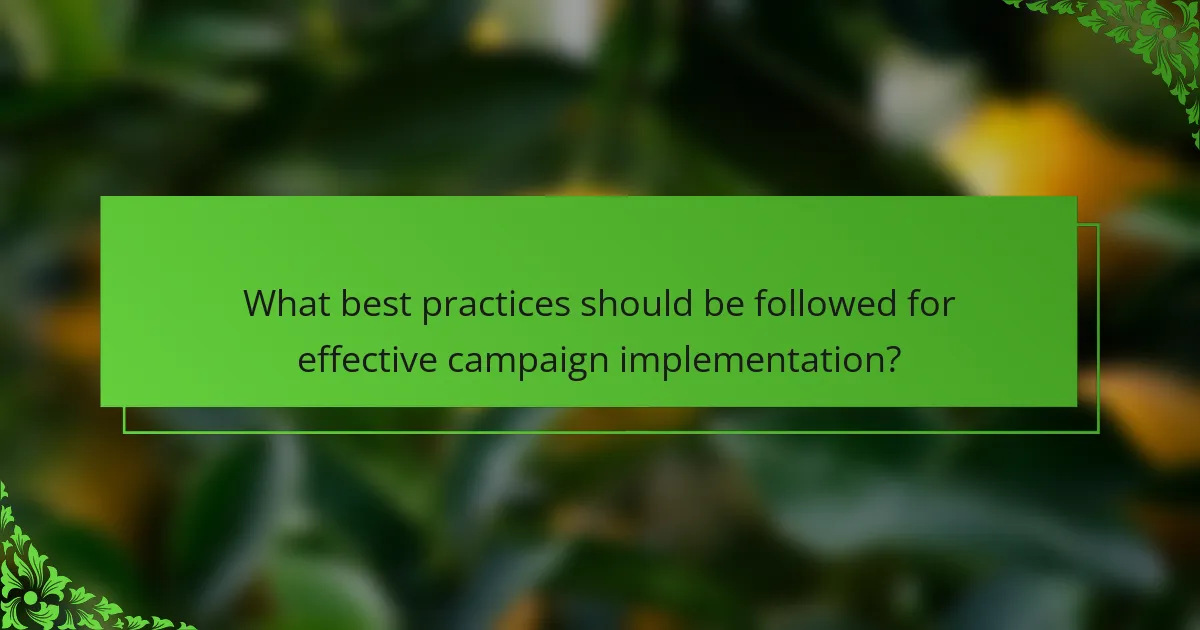
What best practices should be followed for effective campaign implementation?
Effective campaign implementation requires clear objectives, community involvement, and consistent messaging. Engage stakeholders early to foster trust and collaboration. Use data-driven strategies to measure impact and adjust tactics. Regularly communicate progress to maintain momentum and support.
How can feedback loops improve future campaign strategies?
Feedback loops enhance future campaign strategies by providing insights into audience responses. They allow mental health awareness campaigns to adapt based on community engagement and feedback, improving outreach effectiveness. Continuous evaluation of campaign metrics, such as participation rates and message resonance, informs adjustments that align with community needs. As a result, campaigns become more targeted and impactful, fostering a stronger connection with the audience.
What common mistakes should be avoided in mental health awareness campaigns?
Mental health awareness campaigns should avoid common mistakes that undermine their effectiveness. Failing to engage target audiences can lead to irrelevant messaging. Overloading information without clear calls to action may confuse participants. Ignoring cultural sensitivities risks alienating communities. Neglecting evaluation methods prevents measuring impact and success. Lastly, excluding individuals with lived experience can diminish authenticity and relatability.
